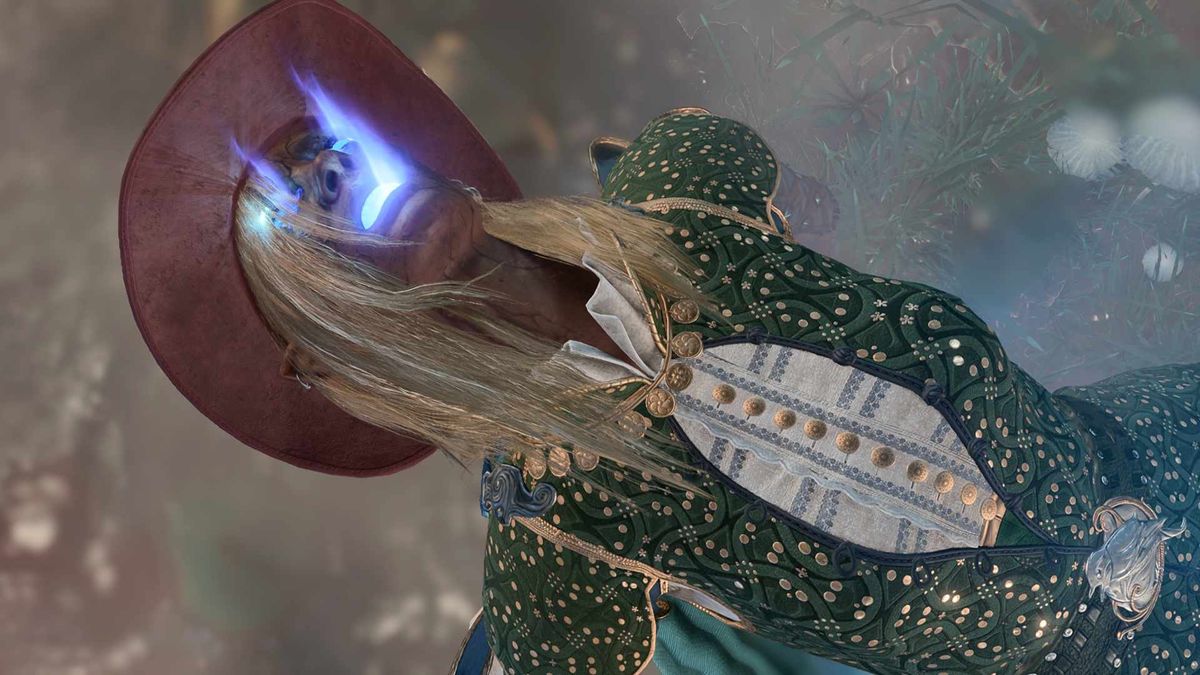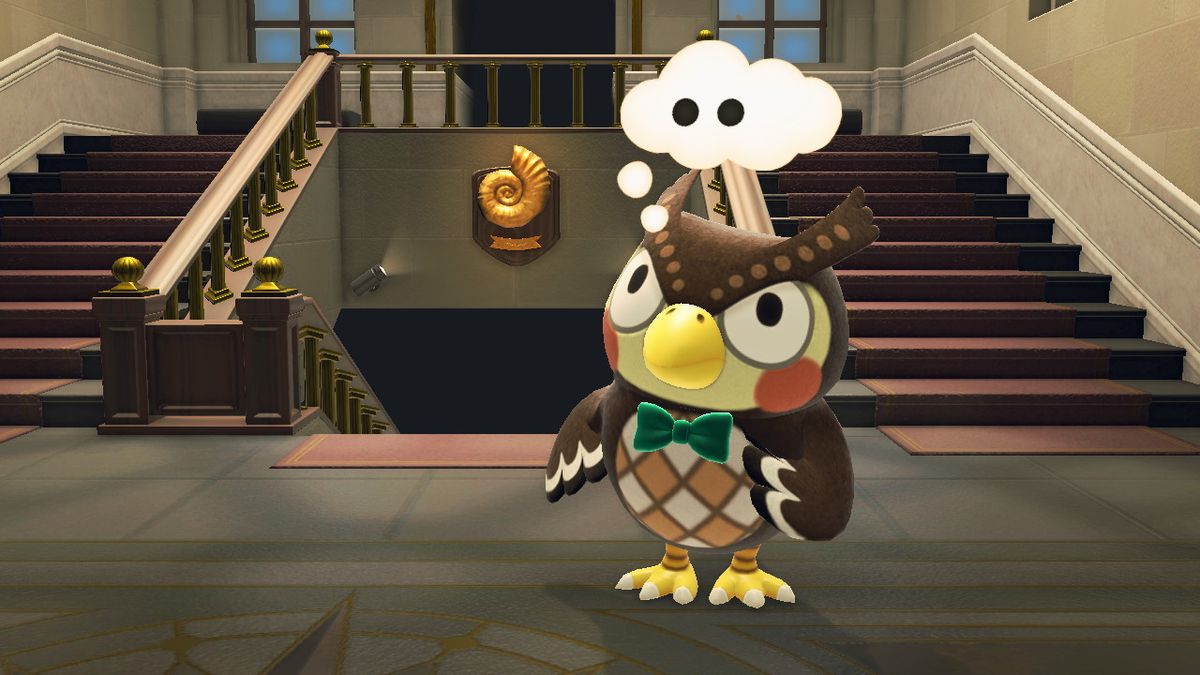I’m playing Goat Simulator 3 at Gamescom 2022 and I can’t help but wonder how we got here. How did Coffee Stain Studios even table the original idea for this, let’s say, unorthodox series? What about taking Garry’s Mod-style ragdoll physics? Uh-huh. And throwing them into a game that’s pretty damn buggy? Okay… And the protagonist is a goat. A goat? A goat. You’ve lost me.
The first Goat Simulator was such an unusual and unlikely prospect, that I can’t imagine the pitch meeting to have gone any other way. Launched on April 1, 2014, everything about the sandbox wanton chaos-creator was tongue-in-cheek. It was never explained why we were tasked with guiding a nefarious goat around town, nor why mission goals – posed as optional achievements – ranged from bleating aloud on the spot to hopping over garden fences, and, naturally, zipping around the skies by jetpack. Goat Simulator 3, as you might expect, carries the joke forward, into the new age and onto the latest hardware. Filling the hooves of a goat dressed in six-inch stiletto black patent, spike-studded heels, an inflatable pig suit, and a balloon animal crown, I can confirm: it’s still really entertaining.

“The way we see it,” says developer Coffee Stain North CEO Sebastian Eriksson, “is that we provide the tools to have a good time and to have fun. I think that adding multiplayer will make it easier this time too. I compare Goat Simulator 1 to being like a comedian doing their bits in front of the mirror. And in this one, the comedian actually gets to perform in front of an audience.”
Acting the goat

Let me save you some frantic Google searching – no, you didn’t miss it, there was no Goat Simulator 2 and you are not losing your mind. In a typically unorthodox, typically Goat Simulator move, Coffee Stain Studios has skipped from 2014’s Goat Simulator straight to its upcoming Goat Simulator 3. “One of the developers put that in for fun at one point,” Eriksson explains. “Then, when we were going to finalize the game, no one had taken it out, it just stuck. And so it’s like this internal joke that’s now out there in the world.”
As with many cult classics, dedicated players are often not only willing to overlook perceived rough edges, but embrace them. For example, 2010 horror romp Deadly Premonition is a game whose fan base swears by its imperfections – to the point where Swery’s Twin Peaks-inspired scare ’em up just wouldn’t feel the same without its clumsy dialogue, awkward controls, and unwieldy driving mechanics. The trajectory of Goat Simulator over the last several years has been much the same: it is far from the smoothest, most polished experience by any means, but that somehow only elevates its charm. With Goat Simulator 3, some of that has been inevitably lost, but during my hands-on time at Gamescom, Eriksson stresses keeping in some bugs, assuming they add comedic value or don’t break the game entirely, was a crucial consideration during development.

He says: “When we have bugs that we think are funny, we usually just lean into them. Sometimes bugs can become a feature that builds on a planned feature, or they can become something else that will be planned at all. But it’s definitely become harder to know where to put the bar. We actually want to make a really good game, we don’t want a buggy mess, we want our game to be fun and funny, and not annoying to players. As such, there have been a lot of discussions about what’s good enough. What is a good bug, and what can be kept in, within reason?”
In practice, this might see minor wall clipping as you ragdoll your way to the top of a smokestack to claim a jetpack. It might see you lose control of a burning fire engine, originally sent to extinguish a gas station blaze. It might even see the ball being forced to respawn in a game of head-butting football after getting stuck behind a tree. The latter is one of several online mini-games that Goat Simulator 3 introduces – which, once discovered, can be activated anywhere throughout its sprawling sandbox. Events, on the other hand, vary in size and scope. Eriksson says there are “hundreds and hundreds” of bite-size Easter eggs to be uncovered; while larger, more significant and sophisticated situations can impact entire sessions. “The first Goat Simulator was, like, a one-hour game. Goat Simulator 3 is more like a 30-hour game.”
Being the GOAT

On the cosmetics front, Goat Simulator 3 has over 350 items that can switch up your look and, in some cases, your abilities. After completing a mini-game that saw me grabbing bags of fertiliser with my tongue and dragging them over seedlings in soil, I gained a backpack that let me grow huge Jack and the Beanstalk-style plant towers on the spot simply by bleating. Besides being absolutely batshit preposterous, I was then able to grow and climb each construct hundreds of metres into the air – perfect for getting a lay of the land around me. Later, after electrocuting myself on an exposed powerline, I was able to shoot bolts of electricity from my nose, whereas inadvertently setting myself alight in the aforementioned gas station disaster, I gained the ability to hurl fireballs from my mouth like some twisted, hollow-horned dragon.
All of which adds to Goat Simulator 3’s most redeeming features: choice and discovery. I barely scratched the surface during my brief Gamescom 2022 hands-on time, but this is a world that begs to be explored – in single-player and with pals. Eriksson posits players who band together will enjoy uncovering new areas, mini-games and easter eggs together, be that in friendly or competitive terms. I, for one, can see a few friendships being tested in the game’s more combative set-pieces (I bit my tongue at the time, but I was genuinely devastated to miss a last-minute sitter during my bout of football against Eriksson), but the wealth of options this game boasts over its forerunner seems really impressive at this stage.

Not everything will make it into the final game, of course – it’s due on November 17, 2022 – however Eriksson and his team have plenty more up their sleeves, assuming would-be players flock to the sequel in the same way they did the first game in 2014. Eriksson adds: “That’s actually why it took so long to get Goat Simulator 3 to where it is today – we had too many cool ideas! We didn’t want to limit ourselves in the ideas that we could bring into the game, and so the scope kind of became bigger and bigger.”
“We didn’t have a line or a goal that we wanted to hit. We just wanted to make a really big sandbox. And once we had that, we really wanted to fill it back to the brim with good content, and to make it a really nice, dynamic place to play around with even after all the contents were completed. At one point, though, we had to say: we should probably release this game. We’ve had, and continue to have, a bunch of new ideas that we are probably going to do. Well, I mean, that depends on what people like about the game, on what we see people enjoying the most, and, actually, whether or not they still like goats. We, of course, hope they do!”
Goat Simulator 3 is dropping on November 17 on PS5, Xbox Series X, and PC (via Epic).
 Games News games, movies and TV you love.
Games News games, movies and TV you love.



